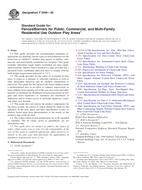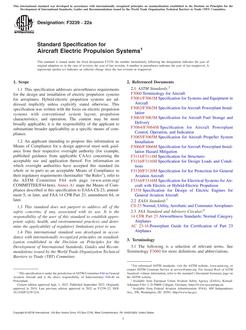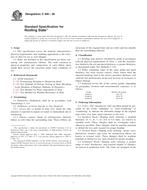1.1 These test methods cover chemical and physical tests for measuring the quality of methanol and appear in the following order:
| Sections | |
| Purity of Reagents | 4 |
| Safety Precautions | 5 |
| Sampling | 6 |
| Acidity | 7 to 9 |
| Carbonizables | 10 to 18 |
| Color | 19 to 21 |
| Distillation Range | 22 to 24 |
| Permanganate Time | 25 to 27 |
| Specific Gravity | 28 to 30 |
| Water | 31 to 33 |
| Water Miscibility | 34 to 37 |
| Ethanol | 37 to 47 |
| Acetone | 48 to 55 |
| Trimethylamine | 56 to 65 |
1.2 The values stated in SI units are to be regarded as standard. No other units of measurement are included in this standard.
1.3 Review the current Material Safety Data Sheets (MSDS) for detailed information concerning toxicity, first aid procedures and safety precautions for the chemicals used in this standard.
1.4 This standard does not purport to address all of the safety concerns, if any, associated with its use. It is the responsibility of the user of this standard to establish appropriate safety and health practices and determine the applicability of regulatory limitations prior to use. Specific hazards statements are given in Sections 5 and 15 and in 16.1, 16.4, and 52.2.2.
10.1 This test method describes a procedure for detecting the presence of impurities in methanol that carbonize or darken in the presence of concentrated sulfuric acid. The test method is applicable to methanol having a carbonizables content in the range from 0 to 70 on the platinum-cobalt scale (see Test Method D 1209).
37.1 This test method is applicable to methanol in which the ethanol content is between 0 and 1000 μg/g.
48.1 This test method covers a procedure for detecting the presence of acetone in methyl alcohol (methanol) in amounts greater than 0.003 weight % mass (m/m) .
56.1 This test method is used to determine the trimethylamine (TMA) content of refined methanol in the range of 10 to 100 μg/kg.
56.2 The odor of methanol has been determined to be caused primarily by the impurity TMA. The determination of TMA and its relationship to odor will eliminate the need to sniff methanol to determined odor, avoiding exposure to this toxic chemical. Although TMA has been identified as the principal cause of odor, other compounds (amines, ethers) may contribute to odor.
Product Details
- Published:
- 12/15/2008
- Number of Pages:
- 12
- File Size:
- 1 file , 170 KB
- Redline File Size:
- 2 files , 300 KB


